In 2023 - possibly due to some lingering covid cabin fever, we decided our annual trip to Europe needed more fresh air and more connection to the real world. We started considering options to bike instead of our usual rental car road trips: travel slower, and see more.
At first, we thought we'd rent bikes once we'd arrived and looked at several bike rental sites - however they seemed aimed at locals or local tourists (as in - the bike was expected to come home for a rest) and the bikes on offer were either speed racers or city crawlers. When adding up the cost for a three week bike tour, it got quite expensive, and restricted our route options.
We looked at our own trusty dusty old bikes, which we - such a short while ago - were ready to abandon to their boredom for several weeks, begged their forgiveness for being so uncaring, and offered to take them with us. They forgave us and expressed themselves eager to join the adventure. So we gave the 1994 Rocky Mountain trail rider and 1998 Giant bike a MEC spa treatment with some new tires and new pedals and they were ready to go.
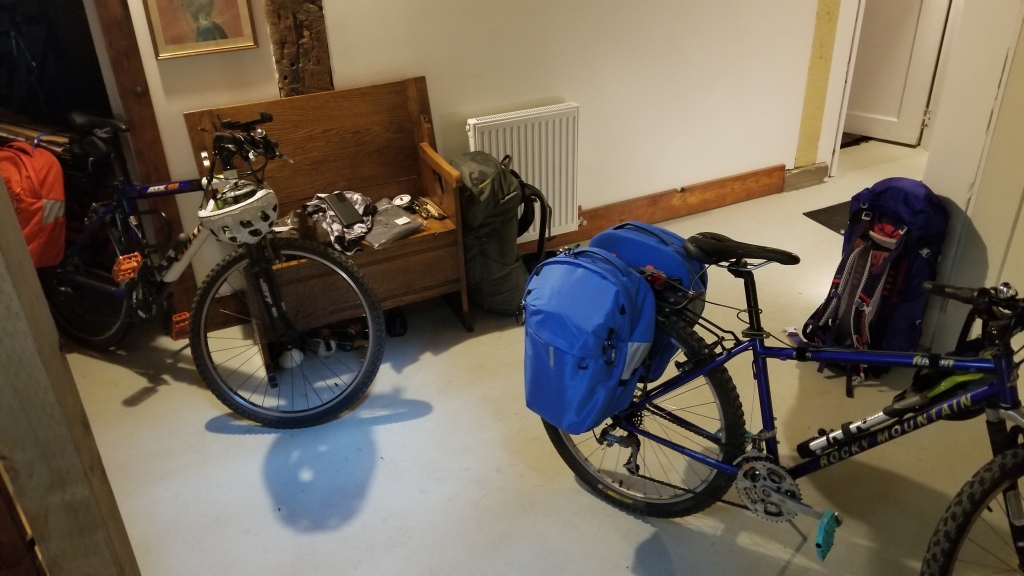
I'm writing this article because I wish it had existed when we were planning the trip.
We learned that Air Canada, charges only $50 to take your own bike with you on the flight (per bike, one-way) but you do need to reserve a spot prior to departure for the bike as oversized luggage (phone number is on the air Canada page). And the bike needs to be in some sort of container with specific maximum dimensions.
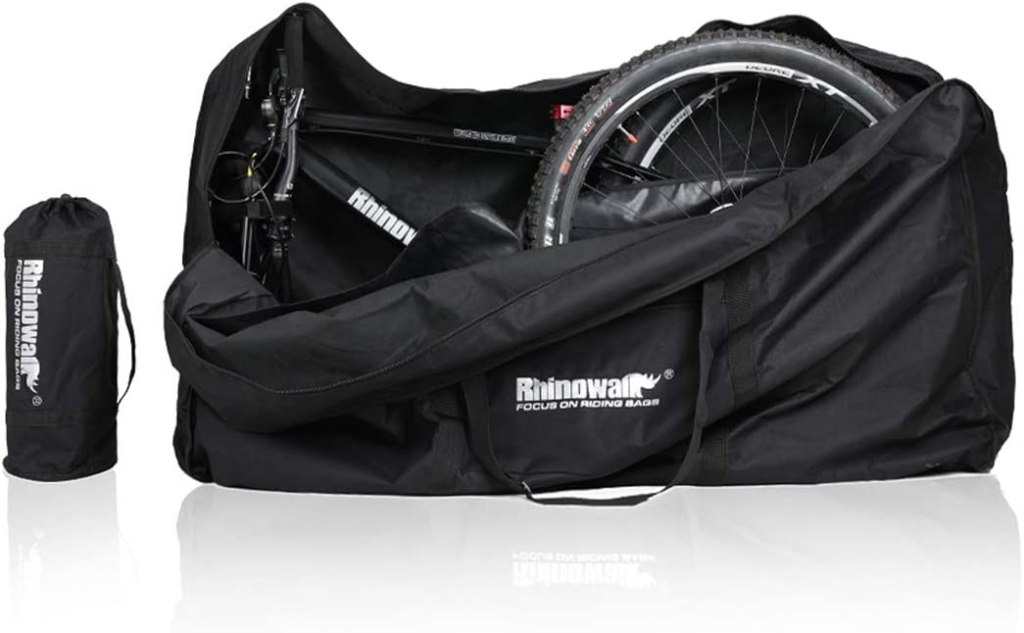
After much research, we bought the Aophire bike bag since it folds so small and is relatively light-weight. We realized that our choices were either to take the bike bag with us on the entire tour, or store the bags in airport lockers at Frankfurt airport for the duration - which added up to a considerable charge. We decided to carry them with. Not sure if this was the right choice - each bike bag took up half a pannier and they are quite sturdy - read: heavy :)
Now, our bikes are well-loved and over 10 years old and we were okay taking a bit of a chance with a soft bike-bag (at roughly $90). If your bike is a carbon-fibre super star, I would suggest looking at the hard-cover bike bags, but then you're looking to spend upwards of $700 (new). A soft bike bag can be stored or carried along on the trip, whereas I'm not sure on how to deal with a hard case unless you have a car - they even seem too big for an airport locker.
With just taking the front wheel and the pedals off, the bike fits in a typical soft bike bag, and the bag itself folds up pretty small and fits into the pannier or I guess could be tied on the pannier rack.
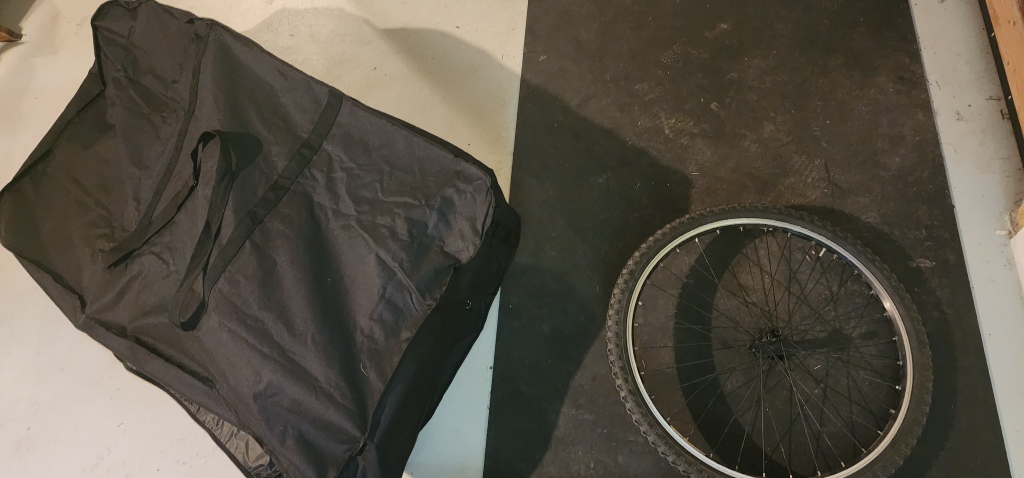
There are lots of Youtube videos available on how to take pedals off; it is a bit tricky and took more hand strength than I had. These videos contained elaborate explanations of how to know which direction to turn the screw; which I struggled to follow until I realized that when you put the bike upside down, you always loosen the pedal screw towards the front wheel, regardless of whether you are doing the right or left pedal.
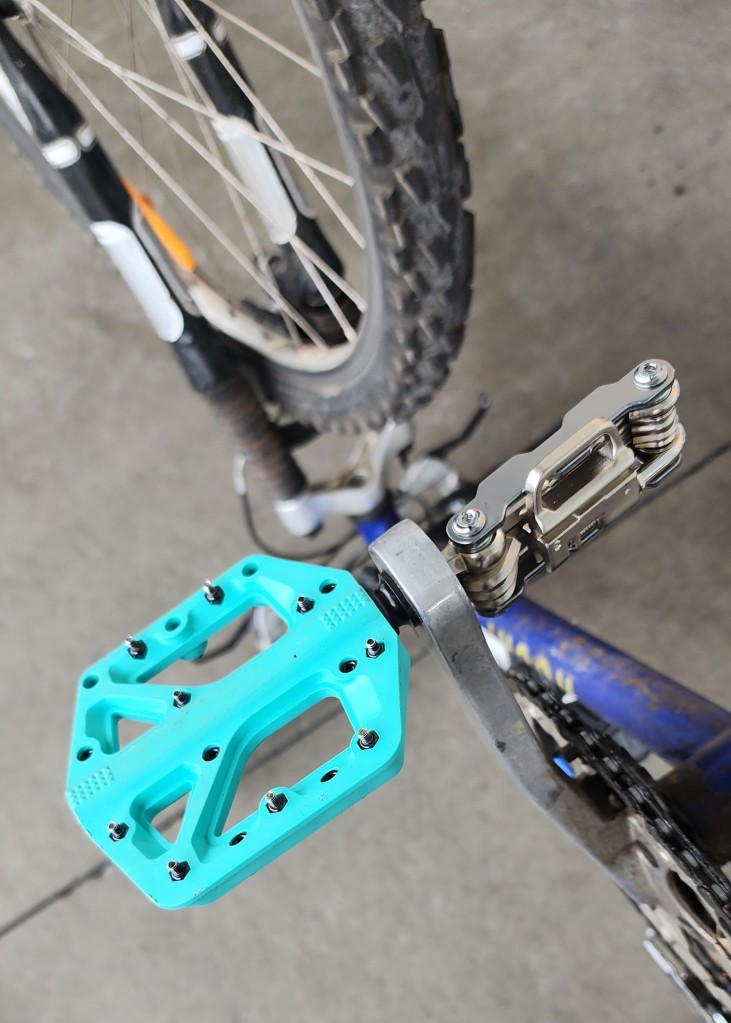 Our two bikes needed a different size hex key for the pedals - I had in my simple mind assumed this was a standard.... The multi-tool from MEC contains a number of hex keys and served for both bikes - but because it was so tiny, very hard to get enough grip for the torque - next time we'll look for a better option - but it worked.
Our two bikes needed a different size hex key for the pedals - I had in my simple mind assumed this was a standard.... The multi-tool from MEC contains a number of hex keys and served for both bikes - but because it was so tiny, very hard to get enough grip for the torque - next time we'll look for a better option - but it worked.
We brought surgical gloves with us, since taking the pedals off is very close the chain, and you tend to get oil on your hands, which may be hard to deal with at the airport. Make sure to bring enough for the return trip!
Don't forget to take the air out of the tires before your bike is loaded onto the plane if you would like functioning inner tubes on arrival :)
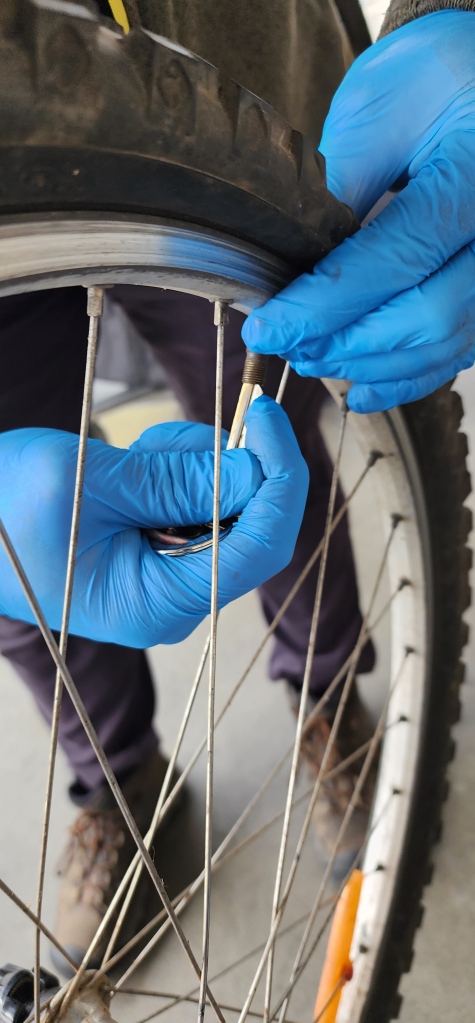
We brought medical tape for the odd repair job; which served us well to repair some minor tears in the bike bags. We used card board boxes inside the bike bag to protect the bike forks after the tires were removed. We dumped the cardboard at Frankfurt airport, and trusted we would find new for the return trip.
The panniers also served as extra padding and protection for the bikes, as they can be loaded into the bike bags on either side of the frame. The bag has sufficient room for the helmets as well.
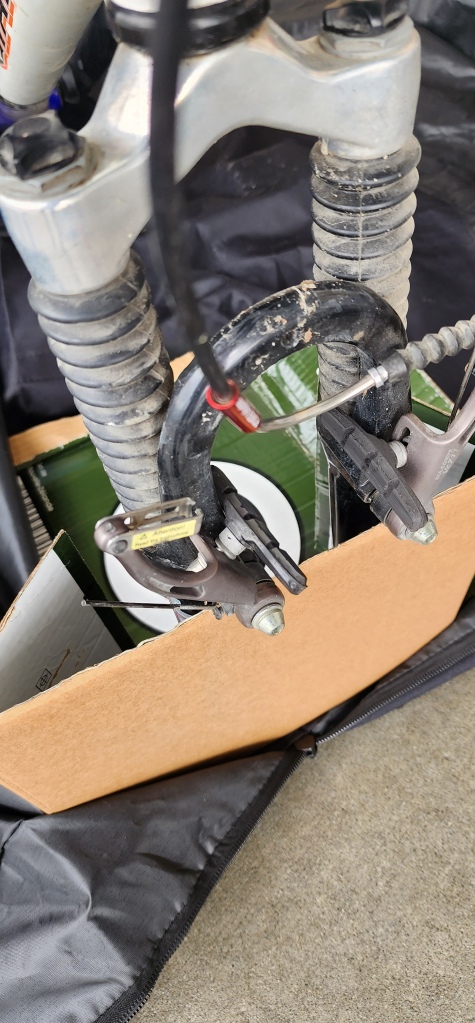
Of course getting to the airport, you still want your functioning bikes, so the actual packing we did at YVR airport.
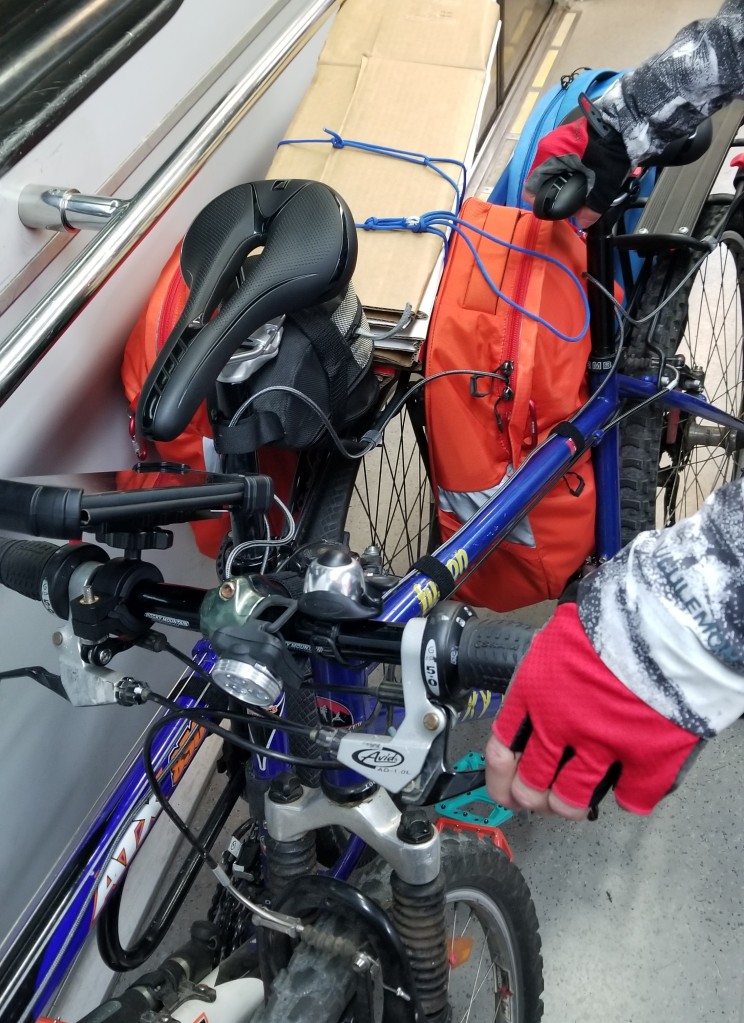
We probably looked quite funny with several full-sized folded cardboard boxes tied to the bike as we traveled to the airport by Skytrain (metro).
It took us about 15 minutes for disassembly and getting both bikes into the bag - we had practiced and timed this before leaving for the airport.
At the airport, after checking in, the bikes need to be taken to the 'oversized luggage' area where they got extra tags from the very friendly Air Canada staff. Nothing can be in the bag except bike stuff, and anything with batteries or electronics needs to come with you (for instance in our case: the USB rechargeable bike lights) - be ready to keep room for this in your carry-on.
Both bikes, once packed into their bag, kinda fit on the luggage cart but were too wide for most doors; so navigating the airport itself once the bikes are bagged is tricky - recommend to postpone packing up your bike as long as possible.
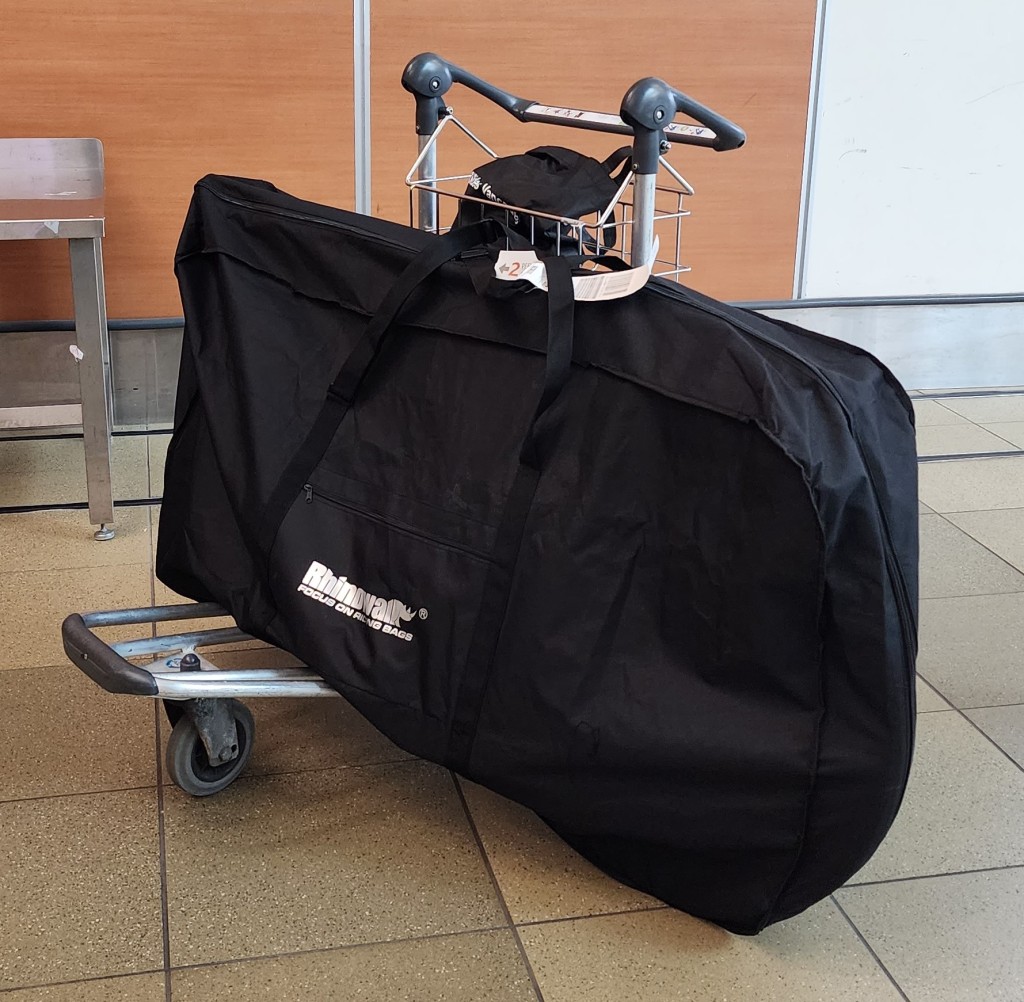
The gear
We bought the panniers from MEC and they are fantastic, nice reflective strip at the back, very sturdy, and a lot of space.
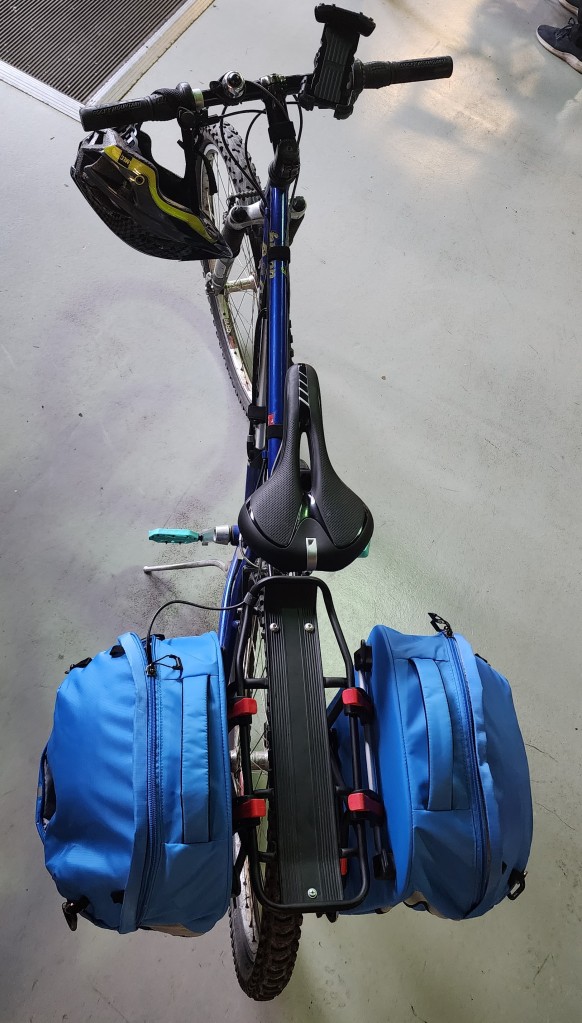
In addition to the panniers, we had a backpack each to give us the extra space we needed. The backpacks were configured with a 3 litre hydration pack inserted into the rear slot, which was desperately needed especially on hot days (you don't want to have to stop every time you get thirsty and even more importantly: you don't want to get dehydrated because getting water is too much of a hassle!).
The phone holder mounted on the handle bars was super handy; it holds the phone firmly but gently and it was easy to slip the phone in & out. Very handy to have your route app available during biking for way-finding.
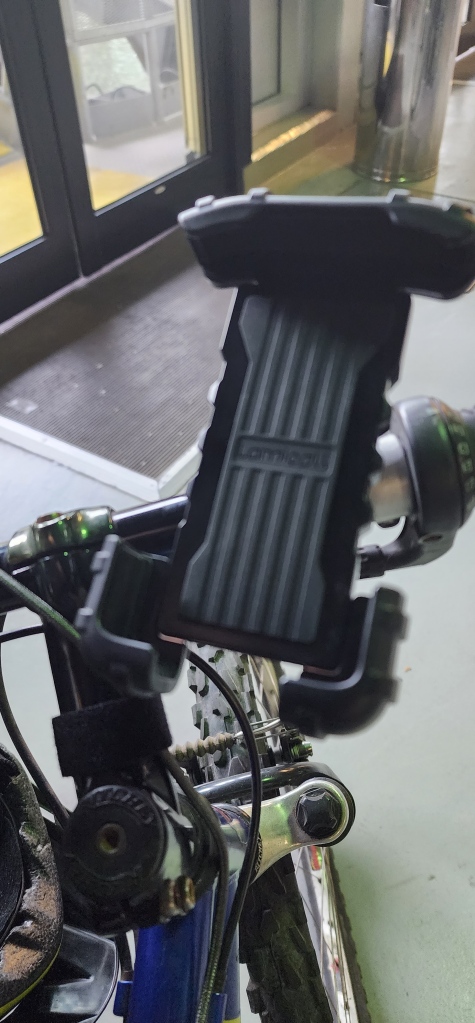
We purchased Anker solar panels that we laid across the pannier holder and tied to the panniers with carabiners on each corner. We used a velcro strapped USB cable along the frame from the pannier to the handle bars & phone holder to connect the phone to the solar panel for constant recharging.
We learned that it is more efficient to bring a sizeable battery pack and charge that from the solar panels rather than connect the phone directly to the panels. The solar panel charges only when there is sun and interrupts its charging in the shade - which activates the phone screen each time when the charging state changes - draining the battery more than it was being charged; resulting in a net-negative. We also learned that battery packs cannot both be charged and discharge at the same time, and next time will bring a spare battery pack to charge from the solar panel while charging the phone from the already charged battery pack.
Note to self: dangly cables are a danger to unimpeded tire rotation.
Overall, the solar panels were a great success, enabling fully charged phones all the time.
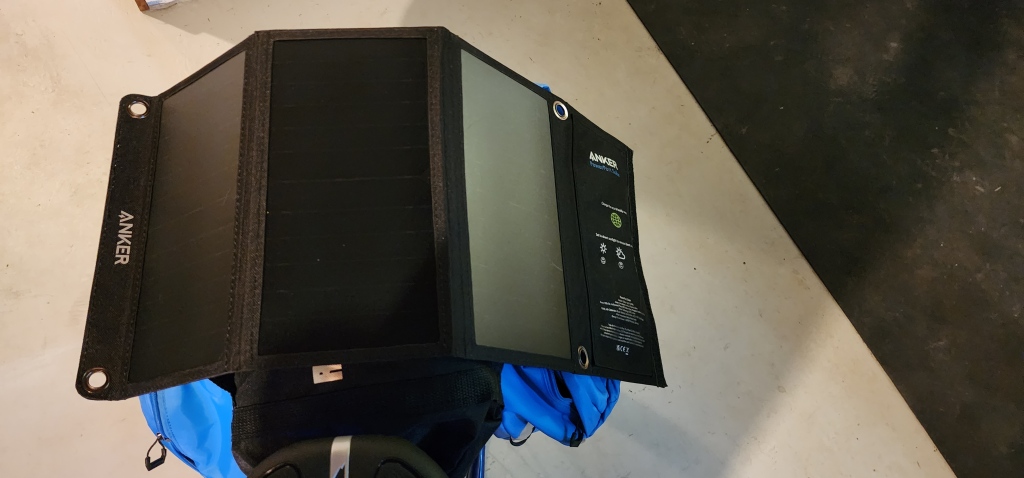
The bikes survived the flight very well - and after an 8 hour flight, it was super refreshing to bike away from Frankfurt airport, and helped us deal with the jet lag.
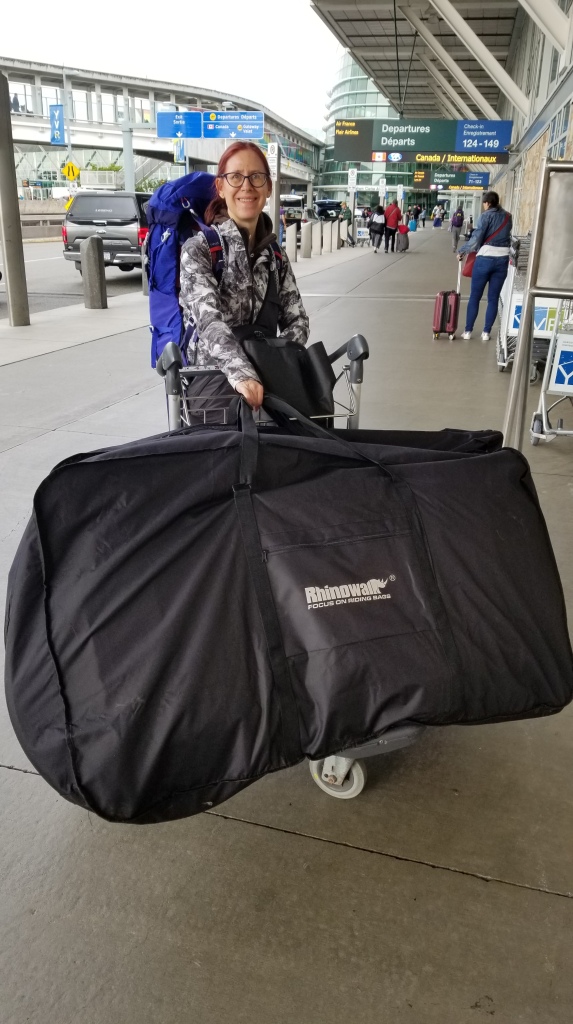

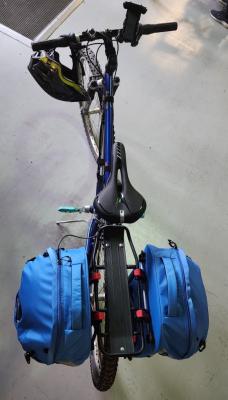
Add new comment